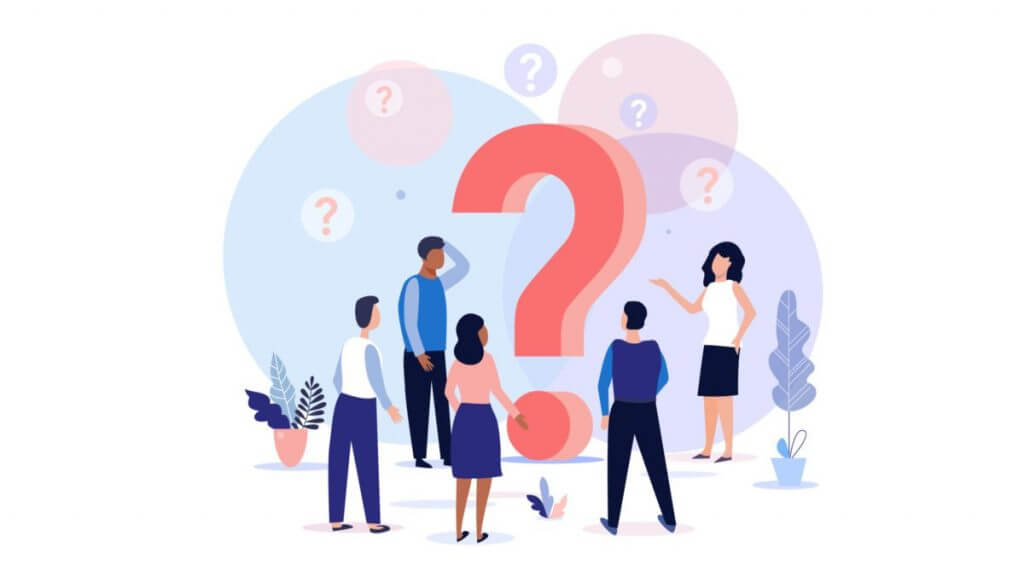Webinar: Maximize Your Vendor ROI with Roy Snell
Transcript for Maximize Your Vendor ROI
Gio Gallo: Hi, everybody. Thank you so much for joining us today. We wanna just welcome you to our dive in with Roy Snell. Today we’re gonna talk about maximizing your ROI with your compliance vendors. So I’m gonna go over a little bit of housekeeping and then hand it over to Nick for introductions. I’m Gio Gallo. Nick and I are co-CEOs of ComplianceLine, and we’re really excited to serve you today by bringing some great panelists and great discussion for you.
Like I said, a couple housekeeping issues. Please jump in on the chat. We’re gonna be monitoring the chat for the whole webinar. Ask your questions, and we will kind of look for ways to insert them into the conversation and leave some room at the end to go over some of them. So please engage. We want this to serve you well and help you become a better leader in ethics and compliance. Additionally, as follow-up, we’ll be sending around certificates of participation and credits if you’re looking for SHRM CEUs, and we’ll also send a video for this.
Stick around for the full webinar. We got a little prize for you as follow-up, and you’ll see that in your email in the next day or so. But without further ado, we wanna jump in here, provide as much value and service to you today. So, Nick, why don’t you introduce us?
Nick Gallo: Thank you, Gio. So when next-gen compliance teams have the parameters of their relationships with their vendors, and they can change those parameters, these changes can have a nice ripple effect for the entire value chain. So, in our disintegrated world where virtually everybody on this call is part of a team where a portion of their work is done by a vendor partner in a third-party relationship, it’s just so critical to get that vendor thing right if your team’s gonna truly elevate and truly, you know, push the purpose of your department or your organization forward in the most efficient way.
So, a conscious collaborative approach to this client-vendor relationship can spread really widely across your area of impact. And this is often done to the benefit of the companies affected. So, the question then becomes how do you do it? So today, we’re gonna dive into that. You have me, Nick and Roy Snell. We’re gonna dive into this vendor management topic, how do we get the most out of it.
And we are blessed to have Samantha Kelen and Sarah Tyre. They’re part of the Cardinal Innovations Team. Samantha’s the chief compliance officer. Sarah is head of procurement. And we brought these guys on because I think they are…this team really kind of lives out this next-gen function that we spend a lot of time talking about this compliance 3.0 approach to business. There’s not this siloing that you’ve seen a lot of organizations at Cardinal. Sarah and Samantha really work kind of hand in hand to get the most out of their vendors and magnify their impact. So, with that, let’s jump in. Sarah and Samantha, thank you so much for joining us.
Samantha Kelen: Thanks for having us.
Sarah Tyre: Thank you.
Nick: So before we get into the details of it, maybe…Sam, why don’t we start with you? Maybe you can give us a little rundown on how you kind of got here, what your kind of elevator pitch story is on how you landed as chief compliance officer, and what some of the challenges have been in the vendor area since you’ve been on board.
Samantha: Yeah, of course. That’s great. So I joined Cardinal Innovations about a year ago, and I’ve been in the space for 13 or 14 years. I ended up here sort of in a roundabout way as many of us do. But once I found my way here, I loved it, and I’ve never left. And I’ve been fortunate to have compliance and ethics positions for really my entire time in the corporate world. I’m grateful to be able to do this job every day. I think I’ve mentioned this to you before, Nick, and it’s super cliché and cheesy, but, you know, I get to feel like I’m working for mankind every day, not just working for the man, you know.
Nick: Yeah. I love that.
Samantha: I really love that, that I get to help our organization do the right thing and the ripple effects that that had out through our communities. And so when I joined Cardinal, I walked into a team that was already established. It had been around for about three years, and the prior folks have done a great job standing it up. And we’re just looking to continue to mature that process, and part of that is obviously using technology when we can and partnering with vendors to use our resources in the smartest way, right? We have internal teams that we can have work on things than we might wanna outsource a particular project to a consultant type service, or we might wanna partner with another vendor for a technology platform. And so I took the last year or so to really look at what we had in place already. There were some things that were in existence, and then figure out how we want to make improvements or make changes.
And Sarah’s quite frankly been such a critical part of that. I’m really glad that she’s here to join us today because I have learned so much from her. I mentioned on LinkedIn today that, you know, coming here about all the things I thought I knew, right? I thought I knew about vendor management. I thought I knew about this, and then Sarah has just opened me up to a whole new world. I’m truly grateful for her expertise because I think we’ve worked through this partnership in a way that does add value for our organization.
Nick: Yeah. It’s such a critical relationship to get right, and I think you guys are such a great archetype for somebody who has gotten it right. Sarah, can you tell us a little bit about your background, how you landed at head of procurement, and what do you think Sarah kind of got right or what you think Sam kind of got right over this first year as she, you know, was able to download so much great information from you?
Sarah: Yeah. I mean, I think there’s a number of things. So, you know, like Sam, I got here in a number of different ways. I’ve been in this space for 20-plus years. I joined Cardinal less than a year ago, right? But I don’t have a health care background. You know, I come from financial services. And so when you think about compliance and ethics and you think about all of the different regulatory requirements, I was right in the middle of the banking world, you know, when the OCC came in in 2013 and really started standing up true vendor management and procurement organizations, right?
And so learning that from the ground up I think has really been beneficial. You know, taking the opportunity at Cardinal has been wonderful because, when I joined, there was not a procurement organization. So my responsibility has been to stand it up while we’re kind of driving the ship as you say. So there’s the lights on, things that we have to do to continue to operate kind of day-to-day and then the things that we need to do to transform and to take the company in new and in other types of directions. And so working with Sam has been a wonderful experience.
I think what Sam brings to the table is a really good understanding of what her business requirements are, right? She knows exactly what it is that she needs. You know, she understands how the different parts and pieces work together, right? And that’s a really big, you know, piece of how you start to look at vendors because not every vendor does everything right or 100%, right? And so if you’re not gonna go, you know, for the same vendor for the entire suite, how do you mix and match those? And I think one of the things that Sam did really well was understanding what those requirements are and then what the capability of her team and the organization is in terms of how she’s expanding. She’s not trying to boil the ocean, right? She’s being very thoughtful and methodical in how she rolls these different pieces out and doing it in a very strategic manner, right, which helps from a negotiation perspective because we understand what’s coming, right? And so that gives you an opportunity from a negotiation perspective. It gives you kind of some leverage there when you’re in the middle of those negotiations and conversations.
Nick: Thank you for that oversight or that overview. That was pretty good. Roy, why do you think it’s important to make the vendor’s experience successful? You know, you kind of gave me an anecdote when we were kind of talking about this. Maybe you can share that with, you know, the audience and kind of hit on that, like, why is that an important consideration because I don’t think a lot of people even think about that.
Roy Snell: Well, one of my favorite stories, I don’t remember if this is the same one you’re referring to, but our first big software purchase at SECE and HCCA was the replacement of our database management system, which essentially affected all the members and, you know, 20,000 people at last count, and it also affected all the staff. And the conversion was brutal or it could have been because of the amount of people that it affected and the data that was in the system. It was basically everything. I put April Kyle who’s head of operations in charge of it. She’d never seen one of these before, and I told her, “This is at best gonna be really, really difficult. And what I’m gonna ask you to do is when you get assignments from the vendor to do stuff and your staff has to enter data or transfer data or set up screens or whatever it is they’re supposed to do, I don’t care when it says on the work plan that it must be done, I want them to drop everything and do it right then. And I don’t care how many people you have to hire to do the operations while the staff is busy doing the conversion. But what I don’t wanna do, which is what most clients do, which is say, ‘I’ll get to your annoying tasks”‘ kind of thinking people aren’t respectful of vendors in my opinion. “I will get to your annoying tasks when I get my job done.” Quite often that’s weeks and weeks. Basically, it goes until somebody blows a gasket.
So I just blew a gasket right away. I just said, “You’re gonna do it now.” And it was harrowing, and it was pretty funny because, when April got done, she thought it was a failure because it was so hard, and there were so many problems. And by the way, she executed it according to plan, and we had many discussions along the way. I tell you, you have no idea how bad these things can go. That was one of the best I’d ever seen. We’ll get into it a little bit later, but I just think we have to have more respect for our vendors. We have to be a better partner.
And let me put it this way in terms of return on investment. We’re gonna spend a lot of money either software or consultants or outside counsel or whatever way that it is, and you can get 10%, 20%, 30% more out of that investment if you’re a better partner. It just makes total sense. This is a two-player, at least, event. And if one player kind of is indignant or slow or whatever, it’s gonna take down the ROI. I always wanted to be a better partner for those who supplied products or services.
Nick: That’s a great story, Roy. How does that overlay with some of the approaches that you guys take, Sarah and Sam? Do you guys think about that type of stuff of how can we be a better partner to our vendors, and where have you seen in other organizations the lacking of that kind of mentality, like, the negative implications of that? Do you have any stories about that kind of stuff?
Samantha: I can add just that, you know, I love Roy’s perspective on that because it is so easy to be like, “Well, I’m a customer.” Like, “You need to cater to me.” And it’s very easy to fall into that trap especially when you do have so many other priorities going on. I really love that perspective and it’s a reminder, and, unfortunately, I probably haven’t done that as well as I could have, right? And so I might be that company that you’re talking about, Nick. We’re working on something now that, you know, the vendors keep driving us to do at the kickoff. I’m trying to get the other folks in the organization to be ready for the kickoff as well. And, you know, they’ve had to remind us a few times, and I think to Roy’s point, if they just have to tell us once, it would just move so much faster. And that return on investment is the time that you spend nagging people or, you know, having to coordinate. And so I think if you can execute that cleaner like April did, that’s a great piece of advice. Sarah, can you think of anything?
Sarah: Yeah. I mean, I think it…for me, it starts with the vendor’s selection, right, and making sure that you’re selecting the right partner. I think it also comes down to the contract, right, because there’s a lot of times especially in the procurement world where people wanna get everything that they possibly can, right? And they want everything to be one-sided, right? I don’t look in that way. I look at how are we going to build the relationship to make this fair but still so that we can hold each organization accountable, right, for what’s in the contract.
And to Sam’s point, right, if you’ve got a timeline that’s documented, then not only is the vendor accountable, but we need to make sure that there’s things in there where we’re accountable. And if we are holding things up, then, you know, we can’t hold the vendor accountable for the deliverable dates and whatever other contractual obligations that they’ve signed up for. So I always look at it and trying to make sure that we’re establishing that partnership, and though there’s enough teeth, right, you know, my job obviously is the contract side there to hold them accountable but also that we’re holding ourselves accountable.
And I think that I’ve seen a number of issues which…where it’s gone exactly the opposite of Roy where people manage projects or they manage implementations off the side of their desk. It never goes well, right? You’ve got to make sure that you are doing what needs to be done. And I think one of the nice things about Cardinal, as we’re working through our transformation, is the, you know, we’re standing up in a full-blown project management office and things like that and really looking at resources and resource constraints and freeing people up to ensure that as we’re working through these types of contracts and we’re working with these now partners, right, rather than… There’s a difference in my mind between a supplier and a vendor and a partner, right? And so as we’re working with these vendors and these partners, that, you know, we’re giving them, you know, their due in terms of what we’re providing to them just as what they’re providing to us.
Nick: So you said you think of vendors partners and suppliers in different categories.
Sarah: I do.
Nick: Can you kind of follow up on that?
Sarah: Yeah. Supplier is really somebody that you’re gonna purchase something, you know, very tangible kind of one time, right? I need to buy in this case maybe it’s PPE, right? I’m gonna buy it from them once, right? It’s a contract where I’m paying you, you send me something, right? That is a very different way of looking at how you manage the relationship with them than if you have a vendor where you’ve got a contract and you’re gonna go to them occasionally, maybe like a staffing partner, right? It’s a long-term relationship, and you’ve gotta establish that relationship, but you’re only buying things periodically versus a strategic partner, right, where it’s a day-to-day operation, and you have to co-manage that operation. And those are very different conversations related to, you know, service levels and things like that. They’re just managed very differently than kind of a one-time purchase.
Nick: So I love that statement and I–. Go ahead. Sorry.
Roy: I just wanna emphasize a great takeaway that Sarah just shared. You know, we were too small to have somebody in purchasing. We didn’t have anybody who was trained or felt responsible to follow the promises in the contract both by the buyer and the seller. So, we had to find somebody that had another job that didn’t really know how to do that that would follow the promises made on both sides. And by the way, there are some contracts but particularly in the area of insurance that if you don’t do the pieces that you’re supposed to in the contract and you have a big event, and you’re going to collect that money, and you didn’t do your part of it, the contract could be nullified. The thing I really want everybody to take away from what Sarah said is this idea of making sure that the line items in the contract, all the promises are followed up on, my tip would be is to make sure if you don’t have purchasing, somebody else makes a work plan out of it and say that these are the dates these things are supposed to happen. That’s a great piece of advice. I don’t think we did it well. I think quite often the contracts would go in the drawer, and some things that were supposed to be done were never done, and sometimes that could be missed opportunity.
Sarah: I mean, I look at things it’s kind of the plan, source, manage, right? It’s a circle, right? And so part of what I think Samantha and I have tried to do is as she’s planning, we’re involved in that planning. So we understand where she’s trying to go strategically, right? I think that she’s done that very well. She’s able to articulate that.
So then when we get to a sourcing event, we understand that what we’re negotiating may be one particular product from the vendor today, but we want to expand in the future, right? And so we don’t have to go back and open up that contract, and we’re establishing the relationship at that point. And then you go into the manage, right? That’s the whole vendor management aspect of it in terms of you’re not putting that contract in a drawer. You’re having thoughtful and meaningful conversations on a frequency around how things are going. How are you going to manage the actual implementation, right? That’s all out in the statement of work.
That’s all contract language, right? The vendor management aspect of it is just as important, to your point Roy, in terms of how you manage them in the partnership as what is in the contractual document.
Samantha: And I think, Sarah, your use of that word partner is really critical, right, because a partnership is a relationship just like any other kind, right? And if it’s based on trust and mutual respect, then there’s a much more likely outcome rather than if there’s, you know, two parties trying to throw their weight around, you know, in these power struggles, “Well, I’m the customer. Do what I say.” And it’s like, “Well, no, I’m the vendor. You need to pay me.” You know, like if there are that sort of griping going on, it won’t work. And so setting that up from the start as a partnership is much different than I’m just out to buy something from you.
Roy: Nick, I got a couple of things. This is my most favorite part of any discussion relating to vendors, and there’ll be more. But I wanted to be the best client that the company had.
Nick: That the vendor had.
Roy: Sorry, that the vendor had. And just to give you an idea how some people don’t even get the fundamentals right. The CEO before me, who by the way made some decisions and took actions that made us wildly successful, but his old school thinking or whatever was to pay the bills at the last possible moment. If it was 90 days, he’d pay on the 89th day, and I think on occasion, he waited till they just complained. When I found out about that, I went into our payables department and stuck my finger in their face, and I said, “The day you get that bill, you process it.”
Making money by putting their money in the bank until the last possible moment so you can get a microscopic amount of interest is just an absolute waste of time. Sorry, I get all worked up there. I also would be a reference. I would tell any vendor we had. If we had them, I was either replacing them or supporting them like mad. I didn’t have any middle ground. So every vendor we had, I told them, “I will be a reference for you any time. You can have the client or potential client, call me directly. As a matter of fact, I prefer it. Why have two phone calls? Don’t call me to ask me. If you wanna call and tell me what it’s all about, that’s fine, but just have them call me.” If we went out to dinner, I’d pay for it or my half. I never accepted gifts of any kind. We would get stuff especially around Christmas, and I’d send it to the homeless shelter. And by the way, it was pretty hysterical when we sent this homeless shelter chocolate covered strawberries one year and a fondue set.
I wanna also be their most successful client. The best example of that is we bought some social media software, and for a time in the early days, we had more activity on our social media, their platform, than any other association they had. And some of them were like SHRM, you know, just gigantic towered over us, but we worked harder at making sure there were activities. And by the way, they would talk to us more frequently, they would engage us in their annual conference, they would ask us to speak and do case studies. And why that was helpful, not for our ego, but we would go hang out and learn best practice.
Oh, by the way, here’s a tip I didn’t think of when we were prepping for this. Many particularly software companies have user group meetings. You absolutely should send somebody to the annual user group meeting to learn about more features and how other people are using things or getting by problems that you have. There’s probably more you could do, but this idea as Samantha said in the beginning that the vendor isn’t some kind of enemy. They’re an opportunity, and if you’re indignant, it’s a lousy partnership.
If you feel like you’re throwing around your money so you can control and dominate, you’re missing huge opportunities. And by the way, the last thing I’ll say, it wouldn’t hurt every once in a while to find a way to talk to some of the people that are your vendors and suppliers, “How can I do a better job? Do I have anybody that isn’t helping as much as they should?” This is a huge opportunity to spending a ton of money. Sorry for the rant, sir but this is…
Nick: No. That’s a good rant. I’m fine with rants like that that got a lot of value packed in there. So I’m gonna start with you Sam, but I’m gonna ask Roy and Sarah this as well. I’d love you to weigh in on this question. So aside from cost, what are your kind of three to four characteristics you’re really looking for in that vendor partner?
And we’re gonna use Sarah’s framework. These are the people that you’re gonna lock arms with and climb the mountain with, not someone you’re just gonna, you know, just buy PPE from or something like that one off, but this real vendor partner that’s gonna be your…you know, what are you looking for from those folks?
Samantha: So, I’m gonna give the lawyer answer even though I’m not a lawyer and say it depends, right? It depends on what you’re looking for. But I think, you know, some of the key things that you want to find the right fit for each project or what you’re looking for are experience and expertise and preferably demonstrated experience. So we had a project recently where I found like the exact example of what we wanted to do with our project, and so we tracked down who did that work. We tried to engage in some business with them, right, because we’ve seen them do exactly what we wanted done. So experience and expertise is one. I think the ability to grow was another one that was important to us.
As Sarah mentioned, we want to try to consolidate some of the platforms and partnerships that we have. You know, we don’t wanna put all of our eggs in one basket. There’s risk associated with that. But I am personally attracted to the idea of having a limited number of vendors to manage because that management ultimately lies with me, right, the business unit. And so I wanted to make sure that that was a manageable number.
And then, you know, flexibility and partnership or customer service are another one. We were negotiating a contract recently, and the party that we were negotiating with was just really difficult, like, dug in and stuck in on the terms. And we thought we were being pretty reasonable. Like, we gave on some things, and they were just really unwilling to budge. And that just sort of set up a red flag for us. Like, if they’re not really willing to play nice in the sandbox with us when they’re trying to win our business, what are they gonna be like when they have it, right?
And, yes, everything Roy is saying about it being a two-way street is very true, but it was just a little bit concerning for us. And so we actually did what Roy suggested. I knew someone in my network who had them, and I called them and said, “Hey, we’re thinking about going with vendor X. Is it worth continuing this conversation, like, are they worth it because it’s getting a little painful?” And so, you know, having that reference or having that person in your network that you can call, I think was really beneficial to us. I think those are the top three that we’ve talked about with Sarah. Sarah, is there any others you can think of?
Sarah: Yeah. I think that there’s a couple of others. One I think, is transparency. You know, obviously, in your world from a compliance and ethics perspective, I always try to be very transparent with people, right? There’s no tricks. There’s no games. What you see is what you’ve got, right, and especially as you are working through a contract, right, the terms are the terms. There are certain things that we can give on and there are certain things that we can’t. And, you know, you need to be upfront, right, to help that process.
I think the other thing is added value, right? Is what are the additional things from an added value that they can get? When you’re looking for vendors and strategic partners, it’s those people that are going to go above and beyond as you build that partnership to bring additional value, right? Some cases people look at that as them trying to gain additional business, okay, whatever it is. But it could be, you know, some of the strategic consulting, right? Did you think of this or not that, right, that they’re not charging you for that. That is a partner.
I think the other thing is fit. I think you said this, Sam. And I look at it in a little bit of a different way, right? I mean, and so there’s so many people in the procurement space that go out to people like Gartner or Moody’s or whoever, and they’re gonna try to find the best in class, right, who is in the top quadrant.
That always isn’t necessarily the right fit for you in the particular moment that you’re in, right? And so, you know, the fit is really important. And one of the things that Sam and I talked about when we were weighing between two vendors is, you know, one of the vendors wasn’t necessarily as mature as the other vendor and we felt that there were some things that could have been improved.
Getting in with some of those vendors and helping them and building that partnership to develop sometimes is just as critical as finding the best in class. It really depends upon what you need at that particular moment, but you have to be willing and open to have those conversations, and Sam absolutely is all the time, to find the right vendor right now.
Nick: I love that.
Samantha: We didn’t wanna go to the big and best because our organization is fairly small, and so we didn’t wanna be small fries. Like, we didn’t want them to think of us as not important or not big enough to care about. And so for us, in some cases, it might be better to go with a smaller to mid-size organization because they’re gonna give us the time and attention that we need and vice versa. We can give input in development of their products.
Nick: Great perspective. Roy, would you add any other qualities to that mix?
Roy: I would throw in I wanna be…I want their predominant compliance or their client base to be just like me. I don’t want a vendor that has 75 clients and 5 of them are like me, because their experience is in the 70 and not the 5. I don’t wanna teach them. Although I like Samantha’s point about smaller clients or smaller vendors, I lean towards them.
We were small. I wanted them to value our business. And particular in consulting work, I would frequently go with small organizations. Also, one of the most important things that I looked at was how many times they’d done it before. If you have an investigation, if you have an audit, a compliance program assessment, you want somebody who can say, “I’ve done this exact audit,” not an audit like it.
And by the way, if there’s an investigation that has been triggered by the government, and that could be a multi-million dollar settlement or hundreds of thousands of dollars, there are people out there that have done it a couple of a dozen times, maybe even with the same investigators and maybe even have a special relationship with those investigators. They exist. They’re hard to find. And by the way, the way to do that is what’s…
When we were prepping for this, Samantha mentioned she spent a lot of time with the vendors and getting to know the vendor community at the conferences. That is a brilliant tip. You know, wander around to some of the ones that are more applicable to your organization or interests, and don’t go talk to them just about buying stuff. Get to know them, understand what their products and services are.
I always used to say at the beginning of the conferences is that we compliance professionals owe it to our organization to understand what tools and services are available out there. And those who won’t buy the vendors on the way to the donuts and never stop by, were doing a disservice to their organization. Last point is…and I’d like to put this back on you Gio or Nick is to understand the people and the leadership. I always wanted to meet them. By the way, I would always say, “Show me the person. I love the salespeople and the CEO, but bring me the person who’s gonna be with us when the deal is done the most. And I wanna get to know that person.” Nick, you know, you and Gio have really focused on this part of being a vendor by proper leadership, hiring the right people, nurturing the right people. Tell us why you focus on that so much and what is important.
Nick: I mean, I think the way we look at it is we kind of take a long-term, you know, this long-term view to business. So, you know, you don’t plant an acorn and wake up the next morning to an oak tree. So value creation takes a long time. That’s just how kind of life works. And at the end of the day, we’re a service organization. We’re a bunch of servants trying to be partners with, you know, our clients to help them climb this mountain. We really wanna take this sherpa approach to this game.
When we talk about a sherpa, it’s not just, “I’m carrying your bags somewhere for you.” This is, you know, you rely on a sherpa to help you do something you can’t otherwise do. And when we get to the top of the mountain, we as sherpas wanna be taking that picture for your Instagram, right? So like it is a client-focused, clients at the top of our organization. So, you know, to your question, why do we do it this way? It’s kind of what makes sense to me. I think if a fish thinks, it thinks from the head.
So, Gio and I, we really kind of set the stage for the values in our organization and what’s important. And so if we can be servants in our company, then we can be a company of servants, and we can be, you know, essentially a company of sherpas to do some of the things that, you know, Sarah was talking about and Sam was talking about, you know, hopefully, if we get those opportunities.
But I am not like a balance sheet guy. I hate nickel and diming with vendors that we have. You know, it’s like, “Listen, if we’re gonna be vendors for a long time and you call me up…” you know, to Sarah’s point, if you’re on a conversation, they give you a little consulting, and then they bill you for that, it’s just like such a slap in the face. It just degrades the relationship into this area where it’s, you know, closer to that supplier thing or maybe that vendor thing.
So to me, I just think that it’s super important in our disintegrated world for us to really be able to sync up with the people that we’re relying on both in terms of those who are relying on us and the vendors that we’re relying on to have this more sort of…you know, this sort of conscious approach to business, this more sort of wider stakeholder view to value creation.
Roy: It’s an excellent point. You know, Sarah, have you focused on that much when bigger contracts, bigger events? You know, do you talk to the people and try and…? How high on your priority list is the culture or atmosphere or character of the people?
Sarah: It is really high. So we just actually in June closed the biggest contract that our organization has ever executed, and there were a lot of people that were involved in that. And one of the things that we did very deliberately through the RFP process was asked to meet with the leaders of the organization, right, our leaders and their leaders.
We put them together so they could start to build that relationship and start to see who the other people on the other side were, what do they kind of represent, what kind of partners are there going to be. And then we also asked to talk to a number of different references, right? Some of those references within the same industry, some of those references same size and scope, some of them, you know, just from an IT perspective, some of them from a consulting perspective. And the conversations that we had were very specific. We were looking for very specific things. But we talked to everybody from, you know, the operations people within those vendors and how they were operationalizing them day-to-day, to the CIOs, right, to talk about what was it like to actually implement the technology. And that was really, really important because when the rubber meets the road, to your point, those sales folks they walk away, right? And then you’re left with the relationship team, and you have to be comfortable with the people that are on the other side.
I think one of the things that I’ve tried to do is kind of long-standing is ensure continuity from a resource perspective in our contracts. And it may seem like it’s a little bit nitpicky, but we’ve always required kind of a face to the organization, a relationship manager with an understanding that if we weren’t comfortable with that relationship manager, that we could ask the organization to replace them, and we needed to have a say in who they were bringing in to manage our relationship. And we think that that’s very important because it sets the tone that we think that the relationship is important and we’re invested in this, and they need to be invested in it as well.
Nick: That’s great. We’re getting a ton of questions in. So this is great. I love when there’s a ton of participation from our audience. Here’s a good one. How do you negotiate internally when you find benefits or strengths in a vendor that costs more but increase your ROI that maybe were not scoped within the two-dimensional RFP that you put out? Do you know what I’m saying?
Sarah: Yeah. No, I think that that’s a really good question. At the end of the day, you know, I think that my responsibility and the way I look at it’s a three-legged stool, right? It’s procurement, it’s legal, and the business. At the end of the day, procurement and legal are there, you know, to serve the business and to ensure that there’s a balance between the business getting what they need and protecting the organization from outside risks, right?
And what those risks are have to be balanced, right? So that ROI and the price, if the business is getting what they need and to Sam’s point, there have been a couple of contracts where we probably could have gone with a different vendor, we probably could have gotten a little bit of a different price, but because she had that strategic outlook and understood that we were going to be willing to do more business with them, we were willing to say, “With this particular contract, the benefits are gonna outweigh the additional costs that we may be paying.”
And so at the end of the day, it’s really the business’s decision, you know, to do that. And we’ll do the best that we can to ensure that the business gets what they want and what they need.
Samantha: Adding on to that, so one of the things I’ve loved about working with Sarah and her team…shout out to Gary. Gary’s on Sarah’s team, and he’s awesome as well. You know, just like we’re talking about having a relationship manager on the other side, I found it really beneficial to let Sarah and Gary do the negotiations because they get to walk away, right?
So they can be the best guys on the negotiation part, and then I get to maintain or someone on my team gets to maintain the positive relationship with the relationship manager on the other side, right? So let the Sarahs and Garys of your organization be the bad guys and do some of that negotiating for you. And then if you find a product that you feel is worth it, but it costs a little bit more and you need to do that internal negotiation or you need to advocate for more budget dollars, I would encourage folks to just get creative about where is that value.
So is that value in time that your staff isn’t gonna have to spend pushing buttons or sorting spreadsheets or answering phones or whatever it maybe? Is it time? Is it dollars? Is it expertise? Is it long-term strategy? You know, value reveals itself in a lot of different ways, and so I would just try to get creative in how you tell that story so that it’s convincing.
Nick: I like that. This is kind of along those lines. Sam, how have you learned to advocate with adopting the vendor with better service that matters more to the front line team when that takes more budget or might be underappreciated by senior leadership or by procurement? It’s kind of dovetails into some of the stuff you were just saying.
Samantha: Yeah. It’s really about how you tell your story, and I think that’s a skill that compliance experts will benefit from honing in any way, right, whether it’s budget dollars overall or it’s, “Hey, here’s why you should follow this rule. It’s important,” right? You need that power of persuasion. So I would definitely encourage folks to go out and do some research about that. I know the SCCE has offered sort of like those soft skilled training tracks at our conferences to help folks learn about negotiation and persuasion and networking and some of those other things. It’s really just about being a good storyteller. I would start there.
Nick: Yeah. I think you nailed that. It’s sales at the end of the day, and we have to sell these ideas and help them to see the value that they’re not gonna see right off the jump. Sorry, Sarah. Go ahead.
Sarah: No, I was just gonna add in. I think the other thing to add to that too is to leverage your partners, right, your internal partners, right? One of the things that I’ve always tried to be with Sam is a partner, like if you need some support to talk to people about, you know, the product or why it’s the right decision or how we’re gonna mitigate risks or what it’s going to bring, let me know, and I’m happy to step into some of those conversations, you know, with her, right?
Because I don’t think that we all have to be the end-all-be-all, right? You know, each bring our strengths and areas of opportunities to relationships. You know, much like Sam has stated that she learned from me, I’ve learned a ton, you know, about compliance and ethics and things from her, right? It’s a two-way street.
Nick: That’s right.
Sarah: And so the partnerships that you build internally, you know, I think that, you know, all of the things that we’re talking about here in terms of establishing relationships with vendors, it goes, you know, the same way in building and establishing those relationships within your organization as well, and so sometimes it just makes those conversations that much easier.
Nick: Go ahead, Roy.
Roy: I think Sarah’s and Sam’s point are great. I would be real specific and suggest sort of departments that you could leverage to help you buy a product that isn’t necessarily the cheapest but more valuable to the organization dollar for dollar, and that would be legal, risk, audit, HR, quality control.
Samantha: Finance.
Roy: Pardon me?
Samantha: Finance.
Roy: Finance, exactly.
Samantha: I mean, as much as you wanna think they’re all about the numbers, they’re actually really not. They’re quite reasonable and understanding that the cheapest option today may cost a lot more in the long run. So I think they’re one.
Roy: One other quick tip, Nick, I’m sorry, is I used to call people that I’d known for years that were the best motivators or collaborators or negotiators, and say, “I’m getting some pushback.” I love these questions by the way. “You know, I’m getting some pushback. I’m going this way or that. How can I build the best argument to convince the folks of what I clearly have not done a good job of describing?” And because if you call peers in the compliance field…like we should probably give out Sam’s phone number and…
Nick: Put it in the chat. Yeah.
Roy: She’s good at this sort of thing. These are great questions. And I think it’s really, the best idea I heard is leverage other departments. That’s true. Because there are people who care about your success that, your department’s success.
Nick: And just to underscore it, I think this is kind of dovetailing off of what all you guys said, but that same approach of recognizing that your vendor can be a partner with you, and there’s a lot of symbiosis that can come out of that and a lot of like synergy that can come out of that, we need to bring that same mentality within our own organization, and compliance should be best friends with procurement, and they should be best friends with legal, and they should be best friends with finance and strategy and so forth because there’s so much positive network externalities that can come from those relationships, not just from iron sharpening iron, but to understand, you know, the challenges that that department is facing and vice versa.
I mean, Sarah just said, “Man, I learned so much about compliance.” Well, that’s because Sam didn’t use Sarah as just, “Okay. You know, I need someone to negotiate this RFP.” There’s obviously more of a relationship there as you can tell by their dynamic on this call. And that’s what the next stage of this whole game is. It’s really elevating it and knocking down those walls, de-siloing our organizations, and really helping each other be more strategic, to your point, Roy.
Samantha: I have one more specific tip to add on to that’s similar to the partnership piece. Say you have a product that maybe it’s a GRC tool or it’s something that another group in your organization could benefit from, see if they’ll sign up and you can spread the wealth, right? So, for example, our IT security team was purchasing a GRC tool that they’ve allowed us to use, and they’re actually not charging us for using that tool. And we purchased something else similar or a different tool recently, we offered IT, you know, if they wanted to use that, right? So it goes both ways, and see if there’s somebody else in the organization that needs a similar tool, and that’s, you know, Sarah will preach about that all day long, right? We don’t want 12 different business units purchasing 12 different tools that are all meant to do the same thing.
Nick: But it happens all the time.
Samantha: It happens all the time.
Nick: It’s crazy.
Sarah: It does. Supplier optimization is critical, and so I think that that’s where when you get down to the partnerships and finding the right tools, right, that really comes into play because to your point, Sam, the GRC tool is not just you guys and information security. Procurement’s gonna be using it, right, as we stand up our formal vendor management program, right? And so it’s really important that you are looking outside of those silos to see what other types of organizations that can use those. I think that’s also one of the things that…the reason the leadership team in Cardinal wanted to bring and stand up a procurement organization, because we can see that synergy and that strategy across the entire organization. We can see, “Oh, wait a minute. We’ve already got three tools over here. I think one of these other tools will probably work for you,” right? And maybe we just need to beef up the contract. Maybe we need to add a module, whatever it may be. And so I think it’s also important to be open to that because it may not be the exact vendor that you want, but if it meets the requirements, then it’s good enough, right? When does it have to be perfect versus good enough?
Roy: I wanna emphasize this idea. You know, and again, the questions are coming in about, you know, what are the challenges associated with trying to get the organization to spend the money or pick a particular vendor or these sorts of things. This is a challenge for every department in every company in the world, and there are some great ideas here with regard to how to deal with that.
And I would suggest this. If you have a vendor that is a little more expensive than others or for whatever reason somebody else in the organization wants to go a different way than you do is ask the vendor what other departments use your software. I know my department might be the primary user, but what other departments have used some of the features?
When you get the references, ask the references, “Are there other departments that…?” Maybe if they don’t even use it, but they’ve enjoyed the benefits of this software, go get them now before you try and sell the purchase of this software or service and get that department to come with you or support whatever you’re doing to help increase the chances that you can get over some little hurdle you’re having with someone who wants you to pick a different vendor or supplier than you wanna pick.
Nick: Yeah. That’s super strategic right there, right? Like, that’s a great tactic to knock those walls down and kind of grease the skids to get done what you wanna get done. Here’s a great question. It’s kind of a two-parter. So when are some signals that you’re headed for trouble with a vendor? You kind of, Sam, rightly talked about that red flag that was coming up with negotiations before the deal was even signed. That’s maybe the type of thing. But I’m saying sometimes a vendor’s quality changes.
You know, sometimes Coke reinvents its formula or something. You know, what are some signals that you’re headed in a bad direction with a vendor or a vendor’s heading in a bad direction? And then do you have any stories when you’ve turned around the performance of a vendor partner that was underperforming as opposed to just having to hit that eject button and fire them?
Samantha: Sarah, do you wanna take this one? My example was really that one about customer service on the front end, right? And I think also responsiveness, and I think that responsiveness is probably evident, you know, pre-contracting and throughout the term of the cycle. And so if you can’t get somebody on the phone or if you can’t get them to respond to your email or if you can’t get them to address that ticket you put in four days ago, I think that’s definitely a big warning sign. Sarah, do you have any other examples?
Sarah: Yeah. I mean, I think that it really depends, and different organizations handle the vendor management differently. Some of them it’s kind of an informal process. Some of them it’s a much more formal process. But the bottom line is if your gut tells you that something’s going wrong, right, because the system…say if you take a system, the system is down, it doesn’t take a formal scorecard to know that if the system is down today and it was down yesterday and it was down the day before something is going on, right? And so whether or not you’re going with your gut and you’re seeing that performance or you’re actually formally scorecarding based off of contractual obligations or whatever else it is, then you’re probably right. You know, you need to have some of those conversations. We did have a relationship with an implementer for a software.
At the end of the day, we did have to hit the eject button. But during the process, you know, we engaged our senior leadership team to have conversations with their senior leaders and really have a look what is going right. Let’s continue to do those things whether it’s on their side, it’s on our side. Where are the areas that we have of opportunity, right? And so we kind of made that list. You know, it turns out that some of the requirements weren’t documented the right way. We needed to kind of limit the scope and push, you know, what we only implemented half one phase and half another, right?
It’s those types of conversations that when you’ve got that relationship, the red flags go up, and you can kind of see that things are happening, and you can kind of intervene as they’re going. It turns out they had a project manager that was, you know, not engaged. They replaced him. They brought somebody else in. We got the product back on track.
At the end of the day, we still had to sever the relationship because there were a number of things we couldn’t get over. We got through that implementation, right? We wouldn’t have done that if we hadn’t been monitoring the relationship, and going with our gut and to your point to say, “If there’s smoke, there’s fire,” right? And, you know, there’s a number of different ways to do that both informally and formally.
Nick: Yeah. And it takes time to get comfortable trusting that gut, but I think when you start doing it, you end up saving so much time and pain down the road that can really be way bigger than, you know, you think it’s gonna be.
Sarah: Yeah. It goes back to the communication and transparency, right?
Nick: Yeah. Right.
Sarah: If you are in a partnership, things are going wrong. You know, as I pull back, you know, my project management hat, right, project management they teach you that it’s okay if a project goes red. Right? That just means that you have some areas of opportunity, you have to have some conversations, and you right the ship, right, you course-correct. It’s the same thing in a relationship. Just because there are some issues doesn’t mean that you can’t course-correct. And those red flags sometimes are what’s necessary to get the ship back on track.
Nick: Yeah. And I guess kind of part of that process, that back and forth and that response from the vendor, that’s just more data and information around what’s the real ethos of those folks? What is the hope for this change to actually take hold and actually be different down the road? I’m just saying that there’s just stimulus coming all the time that we can tune into to get some…you know, to kind of read those tea leaves and get a better sense of what the expected value of this relationship is.
Sarah: Yep.
Roy: It could also be employee turnover or drop support for a particular feature, or a drift to a client base that is unlike you, the last one being most esoteric. But if there’s pretty serious turnover on a regular basis in the first year, it’s not a good sign. I know you value that focus, Nick, a lot on, you know, making sure that everybody involved in the company is listened to and empowered. Vendors like that don’t tend to have a lot of turnover.
Nick: Yeah. So, that’s a great point, Roy. Do you guys ever look at like sort of these tangential places for information? Like, do you go to a vendor’s Glassdoor page and see what their employees are saying about him and stuff like that? Is that a good source of information?
Sarah: Yeah. I mean, I think we do it both formally and formally. And I think Sam is smiling at the same reason that I am because, one of the contracts that we were working on together, we hired, what, three or four different sales reps in a very, very short period of time. And that was very, very telling, and that turned out to be the contract if I’m remembering correctly, Samantha, the one that we kind of had to take a step back and say, “Is this really a vendor that we wanna do business with,” right? But absolutely, all of those types of things we take into consideration. When I stand up formal vendor management programs, you know, we look for and monitor all of those types of things in the news, massive layoffs, you know, turnover. We’ve even gone so far into really, really enterprise-critical contracts to write SLAs or KPIs, and they’re related to the turnover, right, to ensure that there’s a consistency and that they’re establishing the right culture that’s gonna fit with ours to ensure that there’s that type of continuity.
Nick: What’s an SLA or KPI?
Sarah: Sorry, it’s a service level agreement or a key performance indicator. I slipped into my procurement world. It’s essentially things that are really critical to you, right, to make sure that you’ve got a good handle on the relationship and that you’re getting the value of your bargain, because at the end of the day, as much as they are partners, they are still providing a service, right? And they have to. They’re contractually a bound to provide that service, and so it gives you a good way to monitor that. But there are ways from an incentive perspective when you add these types of provisions in to say, “This is the type of relationship we’re looking to establish. We’re looking to establish a long-term relationship,” right? And we can do that by giving you a 10-year contract, right? That shows that, you know, we’re in this with you, but in return, we want you to guarantee because this is critical to our business that you’re gonna manage your people and treat them appropriately so that you don’t have an abnormal turnover.
Nick: Great. That’s great. I love that you talked about that culture piece because, you know, if we’re talking about partnerships, it’s critical that those values overlay and that they’re complementary and that they’re pointing in the same direction. I’ll just speak for myself. The vendor decisions that we make within our own business when we kind of look underneath that culture rock, it’s very, very revealing and it ends up playing out how you would expect. Do you know what I’m saying?
Sarah: Mm-hmm
Nick: Here’s a question for you Sam. Have the recent events with COVID-19 affected your relationship with your vendors, meaning costs, billings? How have they been during this time? Have they been easy to work with during these turbulent times? What challenges have you run into?
Samantha: So I have actually found our vendors to be extremely helpful during this time. And I think the ones that are helpful are the ones that stand out in my mind and are potentially the ones that I might call on more in the future, right? So, for example, we have a training partner that we just engaged with that has offered us free courses related to COVID-19, right, things to educate folks about how to stay safe and wash your hands and wear your mask and all that stuff. One of my biggest pet peeves throughout this whole time has been, “Hey,” you know, your average sales call. Like your cold email like, “Hey, I’m so-and-so from such-and-such. We’d love to set up time with you,” and like no acknowledgement that we’re in the middle of a global pandemic. Like, “No. Hey, hope you’re well. Hope your family is well.” Like some of that stuff goes a long way. And so I really appreciate those vendors who recognize that. The other piece of this for me in particular was I was very involved in our COVID-19 response, and there were a couple of times where I dropped the ball on things with vendors because I was knees deep and eyeballed down on COVID. And I appreciated their flexibility and their awareness about what was going on, right? I just feel like it’s very inauthentic in this particular place that we’re in right now to not acknowledge what’s going on around us. I appreciated the ones that have been helpful.
Nick: Anything to add to that, Sarah? Thanks for that answer, Sam. Roy, Sarah?
Sarah: I would agree wholeheartedly. I mean, we’re all in this together. Everybody’s had to learn how to work differently. I think that, you know, the vendors that are really in it, we’re finding that they’re a lot more flexible, “I need to meet at eight o’clock. I need to meet at six o’clock. So I’ve got my kids at home or I’ve gotta get them to do that.” And I think that that ties to kind of that partnership, right, that they’re willing to make those concessions because they understand, and we’re all in this together.
Nick: Right. Very good. Thank you for that. Roy, anything to add on the back end of this thing here? Gio’s showing up. That means we’re at the…
Roy: We’re getting close.
Nick: We’re at the one yard line. Yeah.
Roy: I just go back to what I talked about a little bit in the beginning that… Maybe a couple things. One is do what Sam’s done is develop a great relationship with the purchasing department or whoever it is that you’ve gotta go work with on this sort of thing. As I mentioned in the beginning, I just really think it’s so important to try to be the best client you can be. Go out of your way to assume that a bigger part of the burden is on you. And there are just so many benefits that come from…you know, these vendors, they get beat up and disrespected a bit, and they get somebody who’s showing them a little respect and are working harder on their end to make the product or service work better, there’s a lot of benefit that’s gonna come…very direct benefit that’s gonna come from that. So, that would be my biggest overall–.
Nick: I think as a client you wanna make it easy for your vendor to walk through walls for you, right, to your point.
Roy: Yes, sir.
Nick: Yep. Well, this has been a great conversation. We had a bunch more questions we weren’t even able to get to. So maybe we’ll send those around. You guys can weigh in on those if you want. But, thank you so much for joining us for this webinar about increasing the ROI on your vendors. I hope this added some value to you. Please reach out with additional questions, and we’ll track down some great answers for you. Thanks, everybody for joining.
Gio: Yeah. Thank you to everyone who joined us today in the audience. We really hope that this served you well and helped give you some tips on how you can get more value out of your vendors and really build those partnerships that are gonna make you a more effective strategic leader in ethics and compliance. I told everyone to stay tuned because we got a little gift for you. Feel free to request. We have an ebook coming out that’s gonna help you implement some of these best practices. We’ve talked about how a vendor needs to be a true extension of your team, and it walks through kind of how to look for common characteristics of good or bad vendors and also some things that you can do to ensure that you’re partnering with the right providers. So you can email content@complianceline.com or really anybody that…anything that you’ve gotten through registering for this webinar, we’d be happy to send that to you. It’ll be posted on our site within a few weeks, but we’re gonna give some advance access to people on the webinar today.
Nick: Awesome.
Gio: Thank you, Sam and Sarah. Thank you, Roy and Nick, for taking us through this. Obviously, a lot of our budget and really a lot of our work is driven by things that are tied to vendors and suppliers and partners, and you guys really helped us today to be more thoughtful about how we do that so that we can serve our team and achieve our missions. Thanks, everybody.
Roy: Thank you.




































